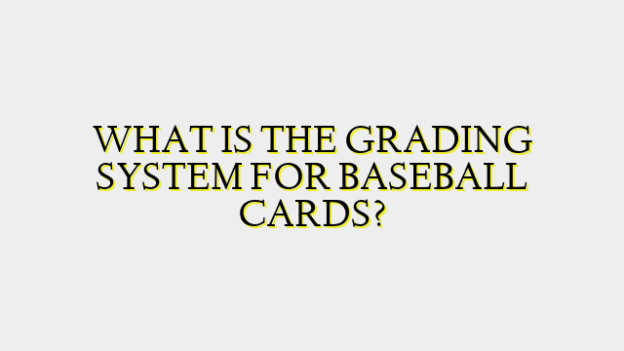The grading of baseball cards is done to determine the card’s condition and quality. This affects the card’s value, with higher grades commanding a premium price. There are three main professional grading companies that are widely recognized in the hobby – PSA, BGS (Beckett Grading Services), and SGC (Sportscard Guarantee Company). Each company has their own rigorous grading standards and procedures to determine a card’s grade in a uniform and consistent manner.
The grading scale most commonly used is the traditional 1-10 scale. A grade of 1 would represent a card in very poor condition, likely damaged and flawed. A grade of 10, on the other hand, would be for a pristine card inabsolute mint condition, completely flawless and preserved. Most common consumer grade cards will fall somewhere in the 3-8 range. Grades of 9 and above are very difficult to achieve and indicate an exceptionally well-preserved specimen.
Within each numerical grade, graders may also assign sub-grades from 1-9.9 to provide further granularity about a card’s attributes. For example, a grade of PSA 8.5 would break down as an overall grade of 8 but with above average sub-grades of 8.5. Sub-grades evaluate different factors like the card’s corners, edges, surface and centering. Receiving high sub-grades in the 9 range within a grade shows the positive qualities of that particular aspect.
Different grading scales are used between the major companies despite using the same 1-10 system. PSA is considered the strictest and hardest to achieve high grades from. They grade cards based purely on their physical condition attributes. BGS incorporates some subjective criteria like eye appeal into the grades as well. SGC is viewed as a more accessible alternative, with reports of slightly higher average grades awarded. Regardless, all are respected and each company’s population report data shows consistency in application of their standards.
The actual grading process involves rigorous inspection under special lighting and magnification equipment by experienced graders. They scrutinize every aspect of the card front and back for any flaws, defects, or imperfections and compare it to pristine examples. HD images and descriptions document the exact condition. For example, centering is measured precisely to determine if borders are equal and borders are examined under high power microscopes. Surface quality, corners and edges receive the same treatment.
After grading, the encased slabs protect the assigned grade like a sealed record of authenticity. Tamper-evident holograms and other security features are applied. Quality control checks the work and resubmission services exist for second opinions. Population reports show the number of examples receiving each numerical grade, allowing analysis of rarity. This transparency has cemented third-party grading as the authentic standard in the hobby where raw ungraded cards are viewed skeptically without the grade verification.
The assigned grade heavily influences a card’s value in the marketplace. Demand is high for top-rated examples like PSA 10 gems, and they often shatter records in big auction sales. Even fractional differences in grade can equate to hundreds or thousands of dollars price discrepancy. Low-grade coins and cards are usually only valuable to collectors looking for affordable examples to complete sets. In some cases extremely well-known vintage stars in any grade retain value based on nostalgia and historical significance alone.
Third-party grading by the major companies brings standardization, quality assurance and transparency to the collecting community. The numerical grading scale quantifies a visual assessment of condition into assigned designations widely understood to determine a baseball card’s investment quality and where it stands in the population hierarchy of surviving examples. Card grading guides collectors towards seeking top grades for max value returns on rare specimens or more attainable mid-range grades to enjoy and complete sets affordably.

